

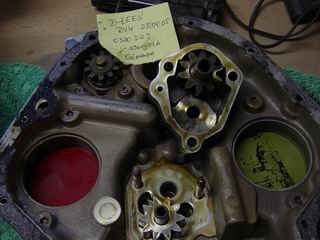
At first there were some AD's to perform on my Lycoming O320 D2J. I had to change the oil pump and there was no fuel pump on it. It's first (short, 300 hours) life was pulling a Wichita spamcan, and those 172's have a gravity fed fuelsystem. I had to change the accessory case, add a plunger and change a gear. It was a good opportunity to check the whole engine, because it sat for a long time. As a result I can say it looked brandnew and was well conservated. (No wonder, Guenther stored it in his livingroom, thank you for that) |
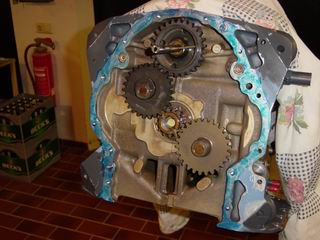
All parts are changed. |
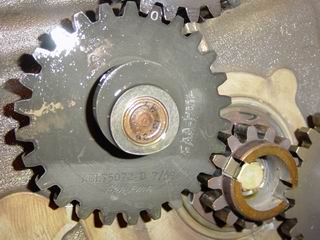
This is the gear I had to change. That little wobble on it drives the plunger, whitch drives the mechnical fuel pump. |
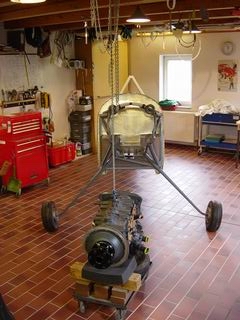
Cylinders are still off to avoid corrosion, but it's time to plug it in! To make a long story short: It took several MONTH to get it in, this is why: The enginemount was welded poorly, one of those donuts that house the shockmounts was welded in 20 degrees off, so there was no chance to bolt the engine, but it took a long time to realise that. Finally I borrowed the enginemount from another builder nearby, and bingo, no problem at all (thank, you, Josef!). So I took some pics, mailed them to Vans and they gave a 50% rebate for the new enginemount and landinggear. Outstanding!! I should have dicovered this earlier, would have saved a lot of work with drilling the landing gear. It was all done at my new mount. But now I know I can do that..... |
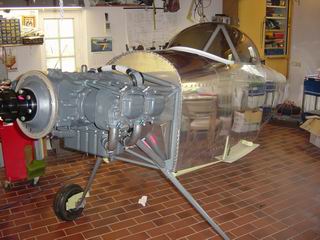
That 'ole Lycosaurus in front will give me peace of mind. No waterpumper will ever power my aircraft, that's for shure. Hey, Textron, develop a dieselengine, aircooled and matching the enginemount, you could earn a lot of money! |
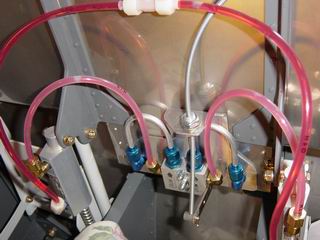
A view from inside the cabin, brake lines and the parking valve. (Still some air in it, but I finally brought it out) |
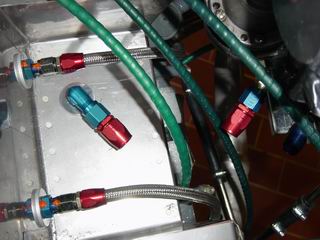
The engine side of the firewall. Now I'm glad to have the 'constant-speed'-cutout, a good place to run the brakelines. I used Teflonlines all the way to the wheels, because I did not trust those plastic lines in an high temperature environment. |
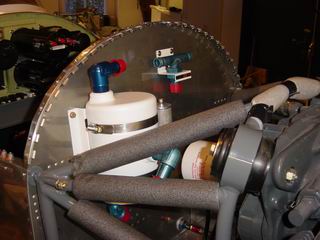
Parts of the Christen inverted oil system finding their way. This was a big challenge to get all that stuff under the cowl. |
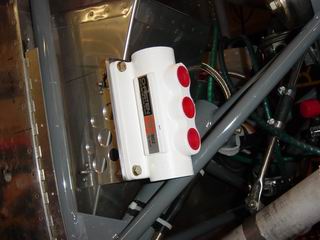
Another part of the Christen System, a flip-flop-valve, that assures to have oilpressue when flying inverted. By the way, you can spend a fortune just for all those hoses.... |
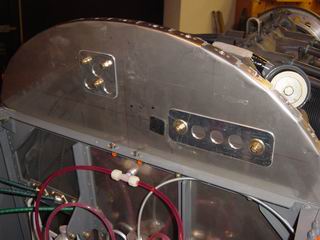
Supports for all the heavy stuff. |
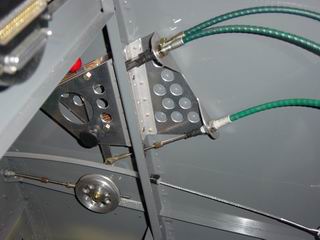
My throttle quadrant. A Vans part, excessivly modified to fit my needs. |
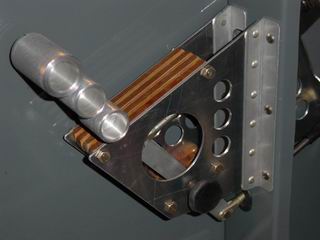
Three levers and a fixed pitch prop? Yes, the third one is for carb heat. If your're in a hurry, just all to the wall. Full throttle, full rich, carb heat off. As you can see, the lever for mixture goes all the way through and comes out on the downside, so I was able to ommit half of the spacers originally installed, what makes the quadrant much smaller (and I have plenty of legroom) |
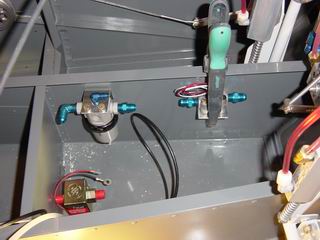
Planning the fuelsystem layout. |
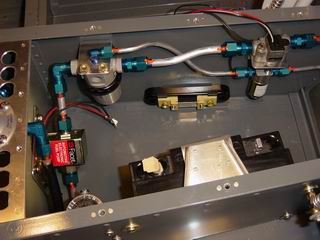
This is how it looks. From left to right: Electric fuel pump, Andair gascolator (inside the cabin to avoid vapor lock), Dynon fuelmeter and priming valve. |
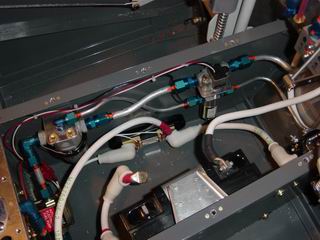
Battery cables. I changed the battery and now an Odyssey cranks the engine. Same size, more power, no hassle. |
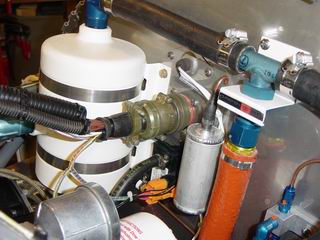
All the engine electric is running through this military connector. Only the magneto killwires are routed seperately to avoid interfereces. |
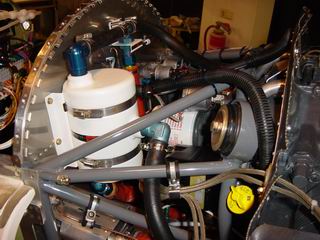
Not much room left here. |
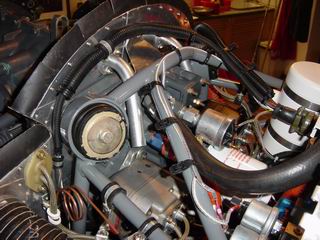
Blasting tubes for the magnetos. |
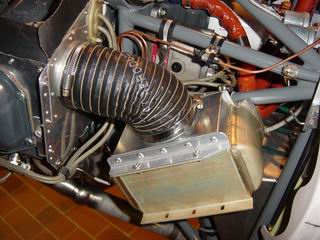
The oil cooler. I scatched my head for hours how to fix it to the enginemount, and finally came out with this (you can't see it here): I took a piece of an old bicycle steeringbar, sliced it in half, rivited one half to a supportangle bolted to the cooler, hung the cooler to the enginemount and clamped it in place together with the other half of the steeringbar slice. On the bottomside the cooler is supported with rubber shockmount at the footwells. Had no problem with it. |
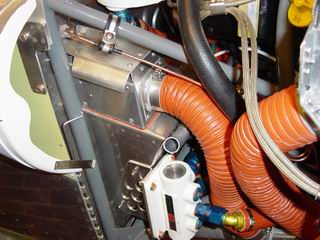
This is my wastegate, if I turn off the cabinheat. The original version seems to dumb all the hot air to the rear of the engine and I don't like that., especially when running AVGAS. The secret should be: Short fuellines and low temperatures in the engine compartment to aviod fuel vaporisation (what causes engine failure what causes broken planes and dead pilots) You can see another recyled piece of an bicycle steeringbar just on top of the Christen valve, here a blasting tube from the plenum will be connected and it leads cool air directly to the engine-driven fuelpump to keep it cool. |
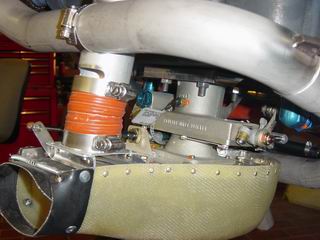
The airbox and the Ellison TBI. (Full aerobatic 'carburettor') |
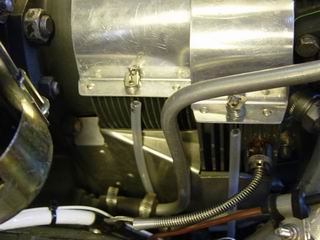
Do not underestimate the time to fit all the baffling, it took two full weeks. |
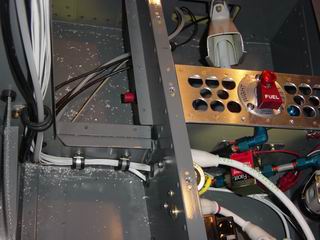
More and more cables crowding the cabin. |
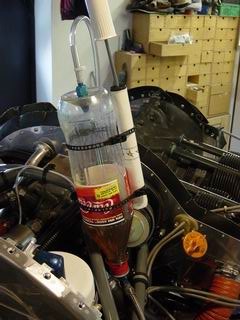
This is how I ran oil through the whole engine before that first engine start. I connected the Coke-bottle to the oilpressue-port and pumped it up with a bicycle airpump. It took 2 hours to get 1 qt of oil in, but this way the whole system was preoiled and I had indicated oilpressure the first second the engine fired up. |